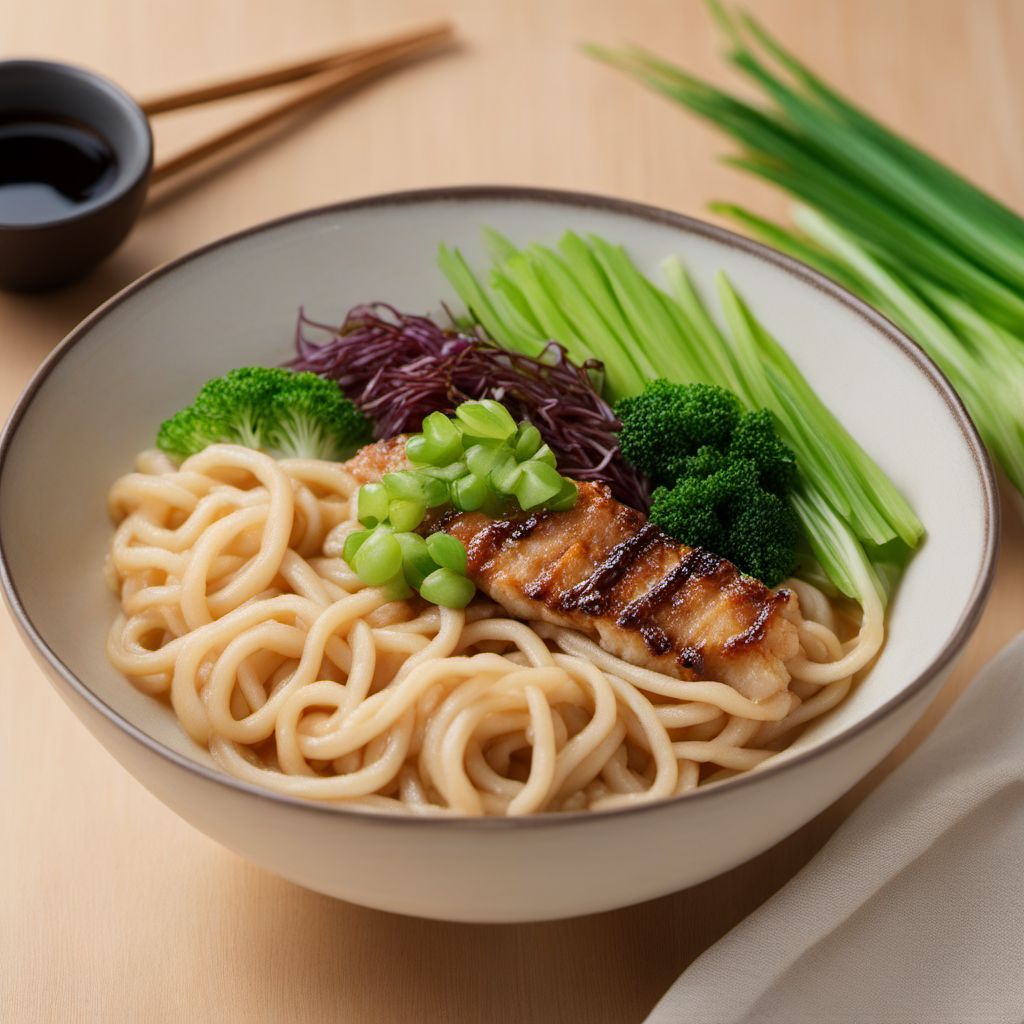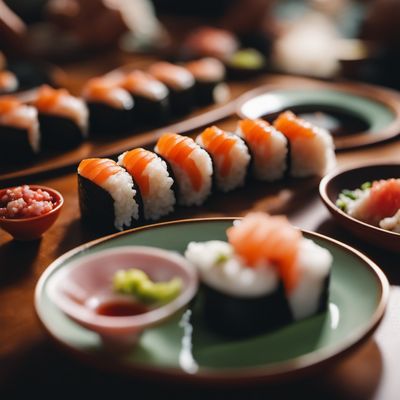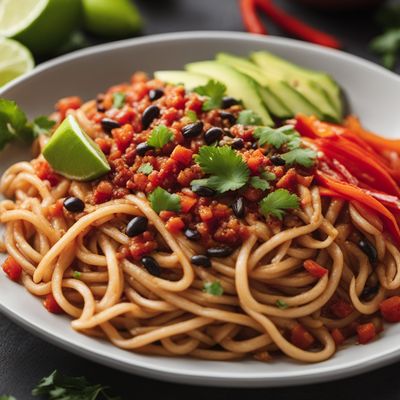
Recipe
Homemade Ise Udon
Savor the Delights of Homemade Ise Udon: A Traditional Japanese Noodle Dish
4.5 out of 5
Indulge in the authentic flavors of Japan with this homemade Ise Udon recipe. Made with thick and chewy udon noodles, a savory broth, and a variety of toppings, this dish is a staple in Japanese cuisine.
Metadata
Preparation time
15 minutes
Cooking time
10 minutes
Total time
25 minutes
Yields
4 servings
Preparation difficulty
Easy
Suitable for
Pescatarian, Dairy-free, Nut-free, Low-fat, Low-calorie
Allergens
Wheat (in udon noodles), Soy (in soy sauce)
Not suitable for
Vegan, Gluten-free, Paleo, Keto, High-protein
Ingredients
-
250g (8.8 oz) udon noodles 250g (8.8 oz) udon noodles
-
4 cups (950ml) dashi stock 4 cups (950ml) dashi stock
-
4 tablespoons soy sauce 4 tablespoons soy sauce
-
2 tablespoons mirin 2 tablespoons mirin
-
1 tablespoon sugar 1 tablespoon sugar
-
2 green onions, thinly sliced 2 green onions, thinly sliced
-
4 pieces of tempura (shrimp or vegetable) 4 pieces of tempura (shrimp or vegetable)
-
4 slices of kamaboko (fish cake) 4 slices of kamaboko (fish cake)
-
Optional toppings: sliced nori, grated daikon radish, grated ginger Optional toppings: sliced nori, grated daikon radish, grated ginger
Nutrition
- Calories (kcal / KJ): 350 kcal / 1465 KJ
- Fat (total, saturated): 2g, 0.5g
- Carbohydrates (total, sugars): 75g, 8g
- Protein: 10g
- Fiber: 3g
- Salt: 2g
Preparation
-
1.Cook the udon noodles according to the package instructions. Drain and set aside.
-
2.In a large pot, bring the dashi stock to a simmer over medium heat.
-
3.Add the soy sauce, mirin, and sugar to the pot. Stir until the sugar has dissolved.
-
4.Divide the cooked udon noodles into serving bowls.
-
5.Ladle the hot broth over the noodles, ensuring each bowl has an equal amount of broth.
-
6.Garnish each bowl with green onions, tempura, kamaboko, and any optional toppings of your choice.
-
7.Serve the Ise Udon hot and enjoy!
Treat your ingredients with care...
- Udon noodles — Cook the noodles according to the package instructions, but make sure to slightly undercook them as they will continue to cook in the hot broth.
- Tempura — You can either make your own tempura or use store-bought tempura for convenience. If using store-bought, follow the instructions for frying or reheating.
- Kamaboko — Slice the kamaboko into thin rounds for easy garnishing.
Tips & Tricks
- For a vegetarian version, replace the dashi stock with vegetable broth and omit the tempura.
- Add a splash of sesame oil or chili oil for an extra kick of flavor.
- Experiment with different toppings such as sliced mushrooms, boiled egg, or pickled ginger.
- To make the dish more filling, add some cooked chicken or tofu.
- If you prefer a thicker broth, you can dissolve a small amount of cornstarch in water and add it to the simmering broth.
Serving advice
Serve the Ise Udon hot in individual bowls. It is customary to slurp the noodles while eating to show appreciation for the dish and to cool them down slightly before consuming.
Presentation advice
Garnish the Ise Udon with a sprinkle of sliced green onions and a slice of kamaboko on top. The vibrant colors of the toppings will make the dish visually appealing.
More recipes...
More Japanese cuisine dishes » Browse all

Kasutera
Castella Cake
Kasutera, also known as Castella, is a traditional Japanese sponge cake that is made with flour, sugar, and eggs.

Chutoro nigiri sushi
Medium Fatty Tuna Nigiri
Chutoro nigiri sushi is a type of sushi that is made with the medium fatty belly meat of the bluefin tuna. It is a popular sushi dish that is...

Temarizushi
Handmade Ball Sushi
Temarizushi is a type of sushi that is made by hand.






